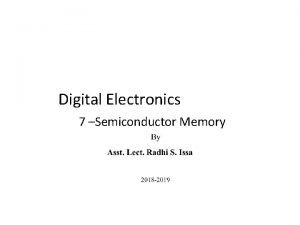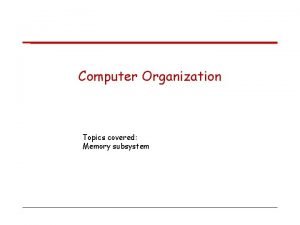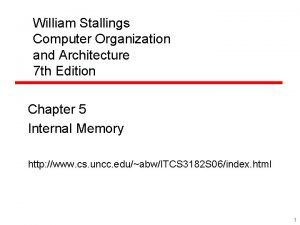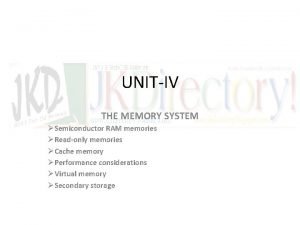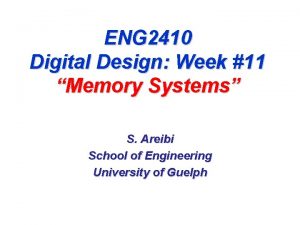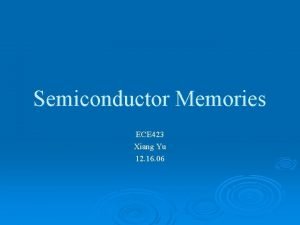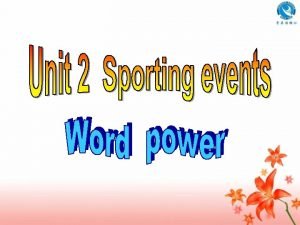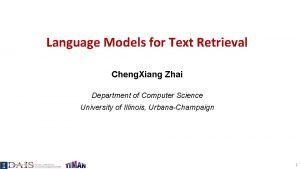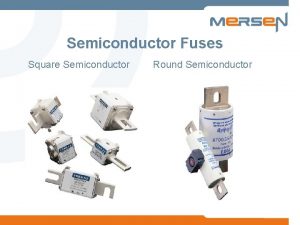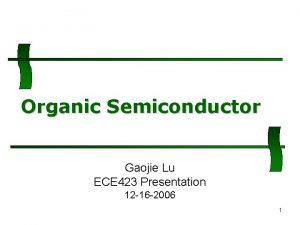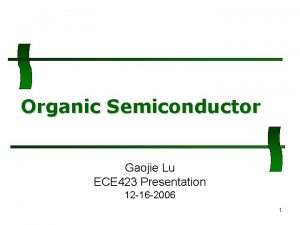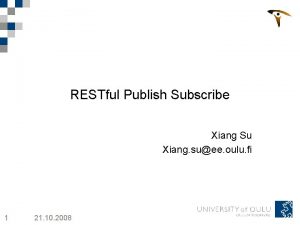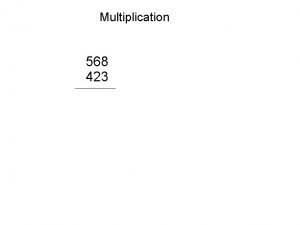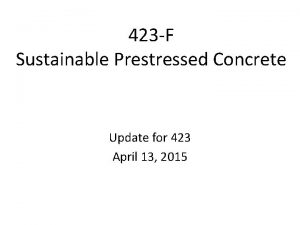Semiconductor Memories ECE 423 Xiang Yu 12 16









- Slides: 9

Semiconductor Memories ECE 423 Xiang Yu 12. 16. 06

RAM vs. ROM Volatile Ø RAM (random access) Ø l SRAM (static) • Synchronous • Asynchronous l Non-volatile Ø ROM (read only) Ø DRAM (dynamic) • • • FPM DRAM EDO DRAM SDRAM DDR 2 SDRAM Etc. . l Ø PROM l Ø OTP with fuses/anti-fuses EPROM l Ø System/Video BIOS UV light for erasure EEPROM Reprogrammable with software and hardware Flash Memory l

SRAM & DRAM Ø SRAM l Pros Ø DRAM l • Extremely Fast • No refresh cycle l Cons • Cheaper • Higher density - 1 T/bit l • Large area - 6 T/bit • Expensive l Applications • Memory caches L 1 & L 2 Pros Cons • Slower in speed • Needs refresh cycle l Applications • Computer memory

Flash Memory Pros Ø Non-volatile Ø Portability Ø High Density l Floating gate transistor • CG and FG • MLC technology High Isolation Cons Ø Oxide layers near min. limit Ø High voltage required Ø Slow WRITE cycle Ø Capacitance Coupling Ø Limited Use Ø

Focus For Improvement Ø Non-volatility Ø Portability Ø Small Area Ø High Density Ø Faster WRITE/ERASE cycles Ø Lower Power Ø Lower Costs Ø Longevity

FRAM Ø Fe. RAM (Ferroelectric RAM) l Uses ferroelectric characteristics of the capacitor • lead (Pb) zirconate (Zr) titanate (Ti) - PZT Pros Ø Non-volatile Ø Small size Ø Fast WRITE cycles Cons Ø A potential WRITE after each READ Ø Longevity Ø Polarization degradation Ø Requires high temperatures Ø Want higher densities

MRAM Ø Magnetoresistive RAM l l Uses properties of magnetism and the development of the MTJ Uses STT technology (Spin Torque Transfer) Pros Ø Non-volatile Ø Small size Ø Fast WRITE cycles Ø Longevity Cons Ø Requires high temperatures Ø Want higher densities

PRAM Ø Phase-change RAM, PCM, C-RAM (chalcogenide RAM) l Uses the special property of chalcogenide alloy • Germanium (Ge), antimony (Sb) and tellurium (Te) – GST • Switches between amorphous (0) and crystallized (1) states with heat from current Pros Ø Non-volatile Ø Small size Ø High density Ø Fast switching times Cons Ø Requires high current (heat) Ø Longevity

Comparisons Ø Overall View Parameters SRAM DRAM Flash FRAM MRAM PRAM Non-volatile No No Yes Yes Refresh No ms No No Cell Size 6 T 1 T 1 C 1 TCMTJ 1 T 1 R Read Time 2 ns 10 ns 70 ns 10 ns Write Time 2 ns 10μs 20 ns 5 ns Write cycles > 1015 105 > 1012 > 1015 > 1012

